By Steven Burg
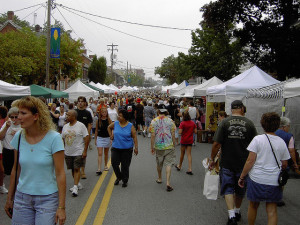
Shippensburg Corn Festival, 2006. Photo by Peter Linehan, Flickr Commons, Creative Commons, http://creativecommons.org/licenses/by/4.0/legalcode.
On the last Saturday in August for the last three and a half decades, tens of thousands of visitors have descended on downtown Shippensburg to enjoy the crafts, music, entertainment, and food of the Shippensburg Corn Festival. Despite the continued success of the event, many people know little about its origins as a fundraiser created to protect and preserve the community’s historic buildings.
In the late 1970s, fast food restaurants began arriving in downtown Shippensburg. In November 1978, Olgaretta K. Witter sold her property at 335 West King Street to the McDonald’s corporation as the site for a new restaurant. To construct the restaurant, parking lot, and drive-through window required the demolition of five historic buildings along Shippensburg’s main street.
In total, an entire block of historic houses would be demolished to make way for the McDonalds, then a Kwik Shopper gas station and convenience store, and finally a quick-change oil center. An entire section of historic structures at the original center of colonial Shippensburg, the intersection of King Street and Queen Street, had largely vanished.
When the demolition process began on Olgaretta Witter’s former home, local residents were stunned to discover that an eighteenth-century log cabin had been hidden beneath the structure’s clapboard siding. Another log structure was revealed when the siding came off a second building slated for demolition at 363-365 West King Street. From the outside, the structure looked like an ordinary Second Empire house, but under its wood siding rested a hand-hewn, v-notched, log building.
Rose Dillner of Shippenburg expressed the sentiments of many residents in a letter she wrote to the Shippensburg News Chronicle on November 17, 1978:
“It’s a sad commentary for such an historic community to stand by and watch while “bit by bit” or should I say “blow by blow” the original 18 cabins in town are being torn down to be replaced by a fast-food chain. …Surely some effort should be made to preserve some of the 200-year-old history that can never be replaced.”
Although they were too late to save the block of buildings slated for destruction, a group of community members decided to take action. After numerous public meetings, they formed a new organization called SHARP, the Shippensburg Heritage and Recreation and Planning Society. The mission of SHARP was “to improve the quality of life in this historic community and to help maintain the vitality of its downtown.”
The organization decided to focus its initial activities on the creation of a Shippensburg historic district. They contracted with preservation specialist, Dr. John Schein, to conduct an architectural survey of downtown Shippensburg. The cost for the survey would be $7,000.
To raise that money and to increase public awareness about the significance of Shippensburg’s historic buildings, SHARP decided to hold a celebration in the historic downtown. Ruth Friedline suggested that the celebration’s theme should be corn, the Shippensburg area’s chief agricultural crop.
In 1981, under the leadership of SHARP Corn Festival Committee co-chairs Rose Dillner and Ruth Friedline, the historic downtown hosted the first Shippensburg Corn Festival. The two-day event on August 15 and 16, 1981 included four food vendors, antiques, a flea markets, farm equipment demonstrations, crafts, entertainment, and “Look Up” architecture walking tours led by Shippensburg State College history professor Charles Loucks.
The first Corn Festival raised $1,000 for the architectural survey, and the second festival in 1982 provided another $1,500. With those funds and private donations, the survey was completed in July 1983.
As a result of the work of SHARP and the Corn Festival committee, the National Park Service listed the Shippensburg Historic District on the National Register of Historic Places on June 7, 1984. In February 1987, the Pennsylvania Historical and Museum Commission (PHMC) certified the borough’s Historic Preservation District Ordinance. After eight years of effort, Shippensburg at last had tools in place that could preserve and protect the community’s historic treasurers.
Although SHARP dissolved in the late 1980s, the Corn Festival continued. Over its history, it awarded hundreds of thousands of dollars in Corn Festival grants to support local preservation and community projects. The historic district has received funds to install historical lighting and fences, upgrade sidewalks, post signage to mark the streets of the historic district, and plant trees and flowers to beautify the streets.
Corn Festival grants have also supported other local preservation efforts, such as the installation of a fence to protect the Locust Grove Cemetery, the reconstruction of the historic Spring Lot Gazebo, tombstone conservation work at the God’s Acre Cemetery, the stabilization and restoration of the Dykeman Springs Hatch House, and funds to rebuild the deteriorating wall of the Widow Piper’s Tavern/Old Court House building.
This year the 35th annual Corn Festival will take place on Saturday, August 29, 2015, from 8 am to 4 pm in downtown Shippensburg. It continues to offer a great way to enjoy a small-town craft fair, to discover the gem that is the Shippensburg Historic District, and to support Shippensburg’s ongoing historic preservation efforts. See you there!
Sources: All of the following materials are located at the Shippensburg Historical Society: William Burkhart Notebook, Building and Development, Building Backgrounds, Sketches, volume 3; William Burkhart Notebook, East King Street from Walnut Bottom Road to Gettel Avenue, volume 10; Album of Edward Sheaffer Corn Festival Photographs; and Shippensburg Historical Society Archives Collection, Events and Holidays, Corn Festival file. Additionally, this piece benefitted from discussions with Dr. Charles Loucks and access to SHARP materials he is in the process of donating to the Shippensburg Historical Society.
Steven Burg is Professor of History and Chair of the History and Philosophy Department at Shippensburg University, where teaches courses on public history, historic preservation, and United States history. He earned his B.A. from Colgate University and his M.A. and Ph.D. in History from the University of Wisconsin-Madison. His current research focuses on the issues of preservation and sustainability, and the preservation of historic cemeteries. He currently serves as Vice President of the Shippensburg Historical Society, Editor of Franklin County History, a member of the Pennsylvania History editorial board, and a member of the Pennsylvania Historic Preservation Board.
Comment Policy
PHMC welcomes and encourages topic-related comments on this blog. PHMC reserves the right to remove comments that in PHMC’s discretion do not follow participation guidelines.
Commenters and Comments shall be related to the blog post topic and respectful of others who use this site.
Commenters and Comments shall not: use language that is offensive, inflammatory or provocative (this includes, but is not limited to, using profanity, obscene, or vulgar comments); disparage other commenters or people; condone illegal activity; identify the location of known or suspected archeological sites; post personal information in comments such as addresses, phone numbers, e-mail addresses or other contact details, which may relate to you or other individuals; impersonate or falsely claim to represent a person or an organization; make any commercial endorsement or promotion of any product, service or publication.
If you would like to comment on other topics not related to this blog post but related to PHMC, please fill out the PHMC Contact Us Form.
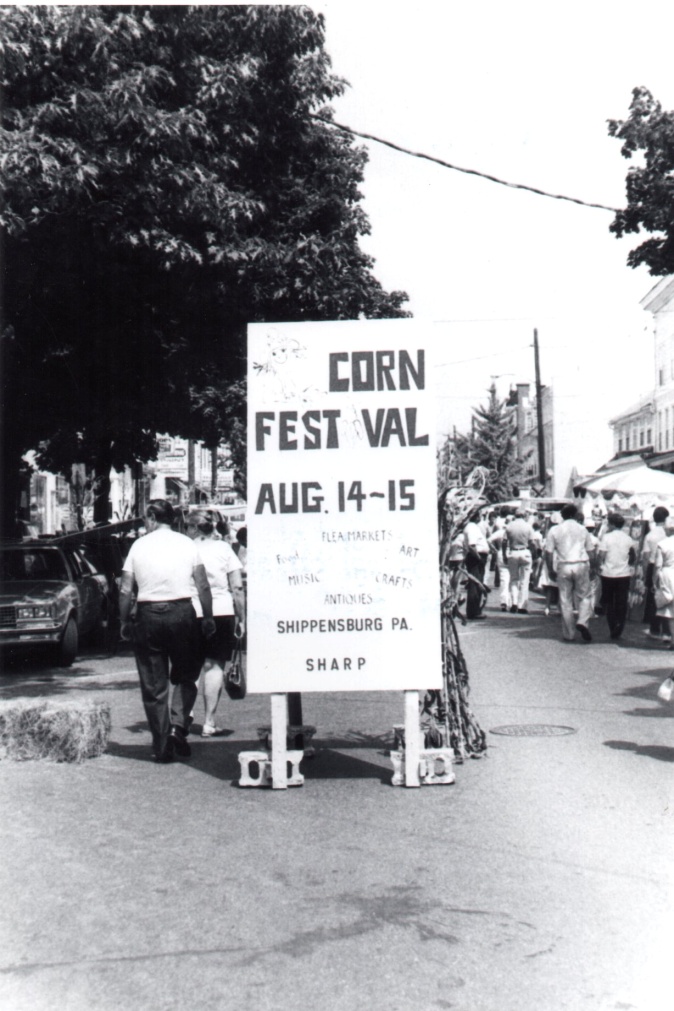
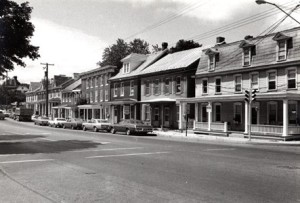
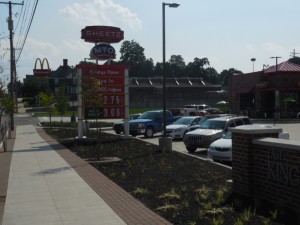
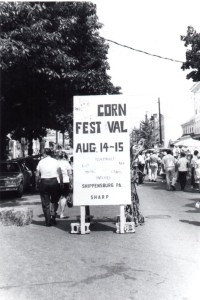
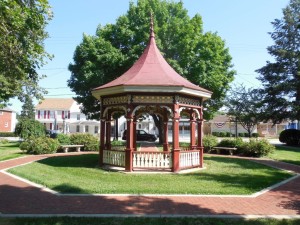
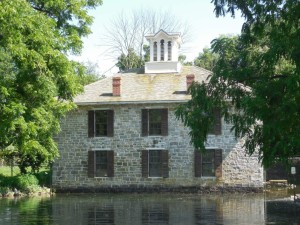
When the buildings were torn down did anyone take photos of the log cabins underneath? If so, are they posted anywhere on the Internet?
Hi Lorraine, Pictures were taken, I do not believe any are available online, but they are available at the Shippensburg Historical Society. Steve Burg
Thanks, Steve. I am glad to hear pictures were taken, at least you have that.
Congratulations on a town that now honors its history and to all the people that, I am sure, work to keep up the fundraising for it. Corn, mmmmm.
What an interesting preservation history story! Thanks so much for sharing the origins of Shippensburg’s Corn Festival, Dr. Burg.
I’m so happy that there is interest in the preservation of my hometown.Those that have been involved have done a fantastic job as this article notes. There are happy memories as I come back to Shippensburg where so many of my relatives worked. Thank you so much for writing this article on the Corn Festival.